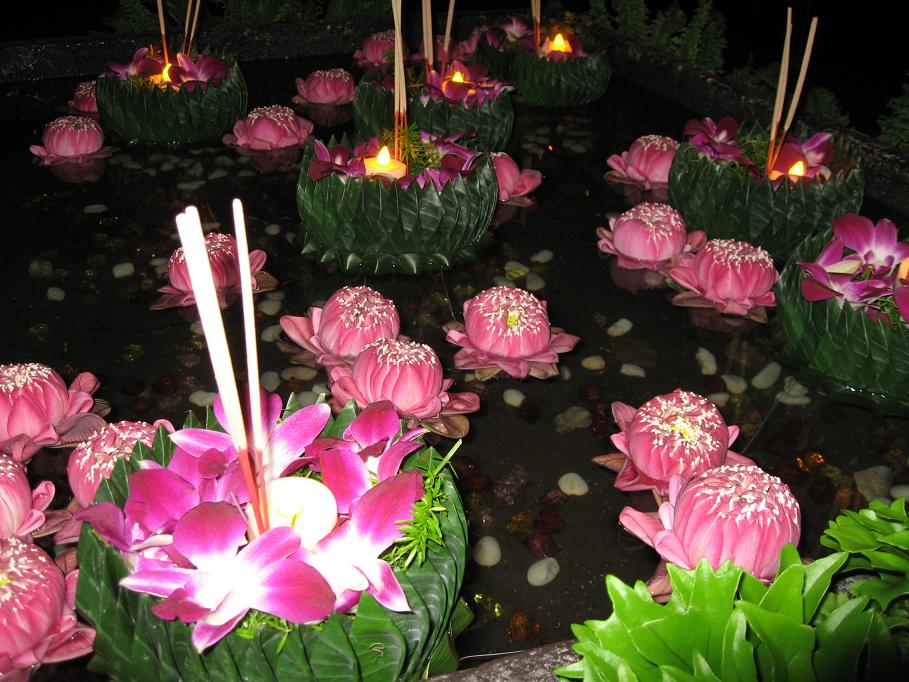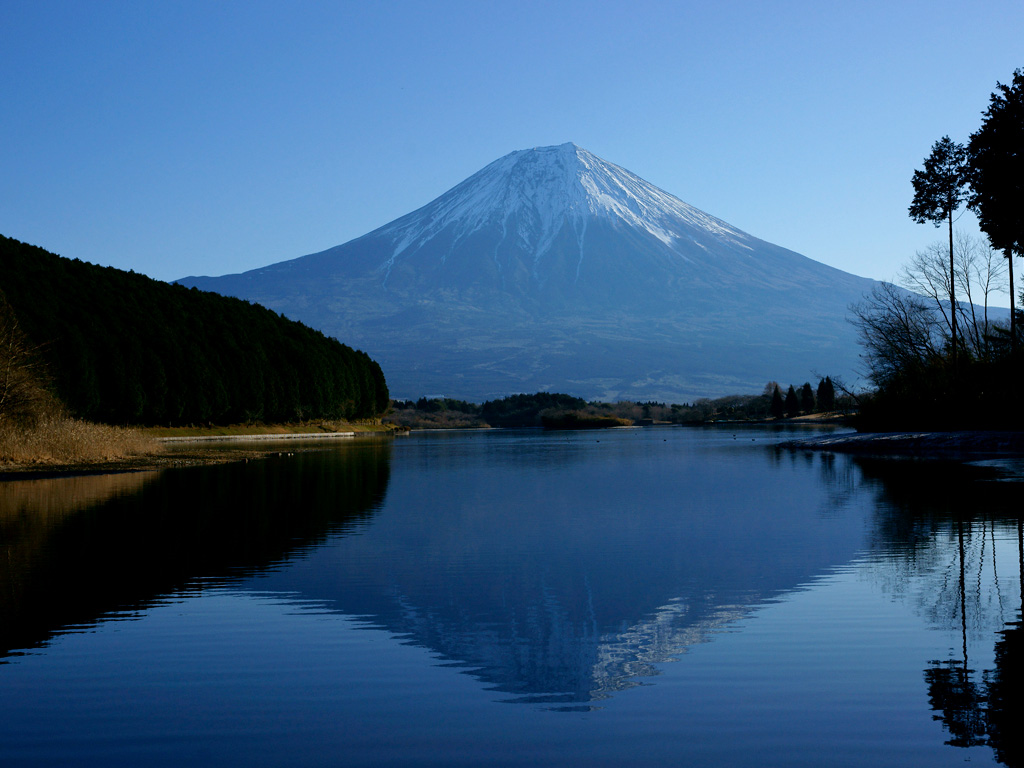
Not only an incense stick, a candle, flowers, and a coin, but also your own hair or nail are supposed to place on the krathong to make an appeal to the water deity that which krathong belongs to who.
(The idea of putting a hair or a nail on the krathong sounds quite similar to the one of Japanese Onmyodo, doesn't it?)
Floating lanterns on the water shone by beautiful moon light on the full moon night in the 12th month in a lunar calendar... looks ever so dreamy.
This year, over 100 people died from floods in Thailand, and not a long time ago, flooding was one of the major natural disasters which killed a great number of people in Japan too.
In my hometown, Yamanashi Prefecture, I have heard that Takeda Shingen, the preeminent daimyo of Sengoku Period, built the embankment called Shingen Tsutsumi in order to prevent the Kamanashi river in Kofu Basin flooded, but recently I have found out about the flood caused by snow-melt water called Yukishiro of Mt. Fuji . This type of flood happens in spring when the snow on Mt. Fuji stats melting due to a sharp rise in temperatures, and the locals pray to gods to keep the town out of flood.

The oldest record in written form about Yukishiro flood is the one written by the monk of Myouhou-ji Temple in Fuji Kawaguchiko on the 11th February, 1545.
There is another record showing that on the 8th April, 1834, an avalanche on the 8th uphill stage of Mt. Fuji caused a big Yukishiro flood and floodwater mixed with rocks and mud swept away the houses and farms in Fujiyoshida City.
The heavy snow fell on the 25th March melted at once due to a sharp rise in temperatures and became a big Yukishiro flood, and attacked Fujiyoshida City on the 5th April, 1961. 118 houses were flooded at that time.
There is no river originated from Mt. Fuji unlike other mountains.
Instead, there are some phantom rivers of snow-melt water appear only in May and June every year.
Yukishiro (snow-melt water) brings 'spring vitality' and it is an important water source for people living on the foot of Mt. Fuji (refer to this post on Fujiyoshida City and Rice Cultivation). On the other hand, because there is not much soil and trees on Mt. Fuji, a sudden snow melting sometimes become a flash flood.
This is the life living with Mt. Fuji - benefits and detriments.

In Japanese language, the word, 'hyoukai' (meaning 'melt away') also used in the context of reconciliation and settlement of a dispute. Japanese also use a phrase, 'mizu ni nagasu' (literally means 'let it flow away with water'), and it means 'let's forget about the past'.
A will to build up a new discipline and bond is even stronger in spring after having come over the long cold winter, especially in the town like Fujiyoshida City.
'take a new turn everything in spring falls and gets up'
This is the beginning of the first song, 'MUSIC' in the first album, 'MUSIC'.
Spring is the time a new life starts in Japan. (the post on cherry blossoms for more details)
When it reaches the time, the snow falling now melts, a new spring starts a new year again.
Gazing at the floating lanterns on the Loy Krathong Day, it came up to my mind that wishing all evil parts of life flow away with water and make a new life, must be a natural instinct of Asian people.

No comments:
Post a Comment